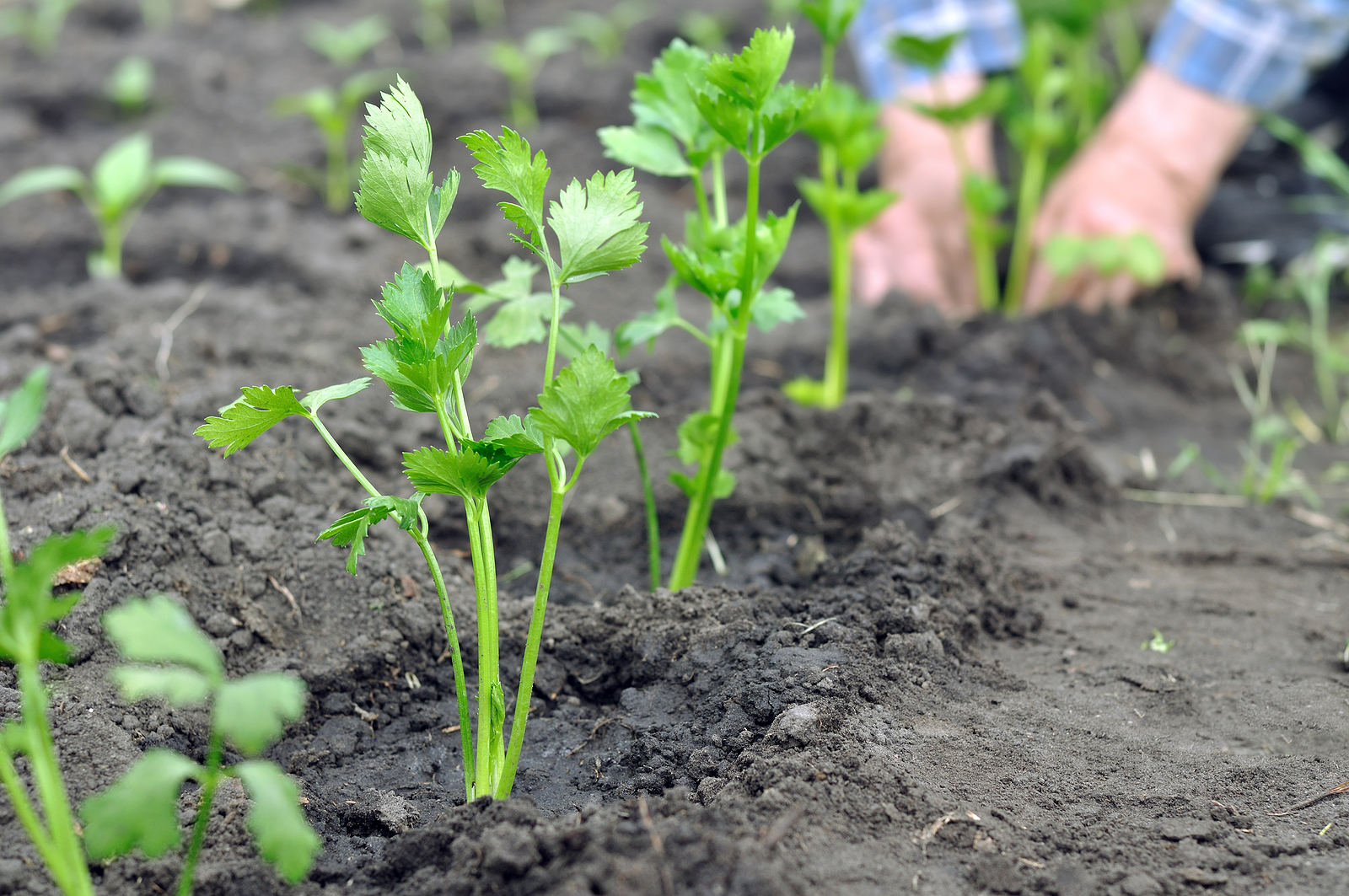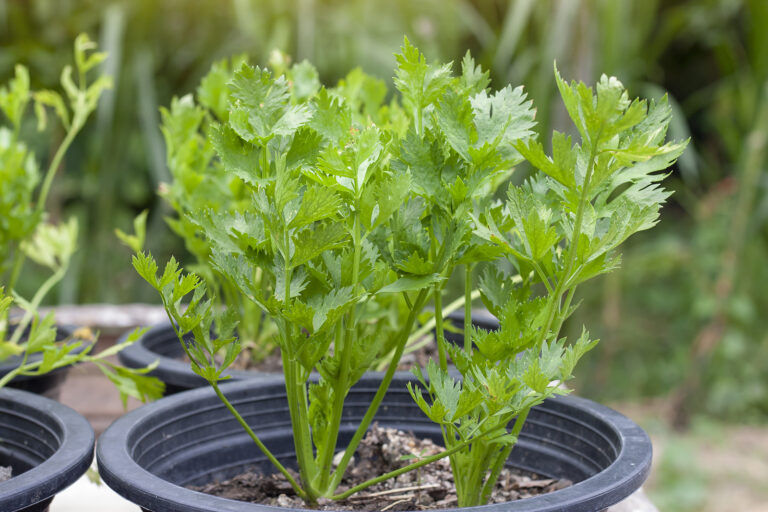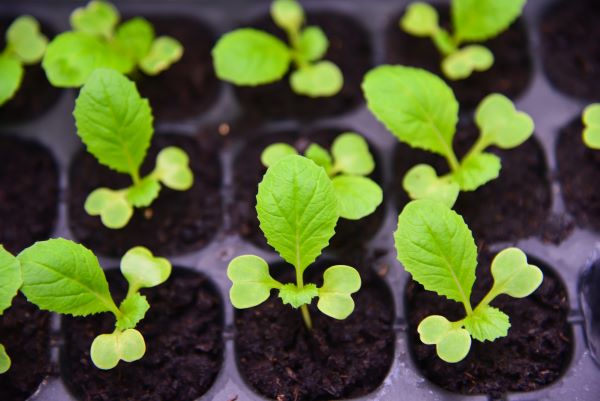Types of Celery Explained: Pascal, Leaf, and Celeriac Compared
When gardeners talk about celery, they may not always mean the same thing. There are three main types—Pascal (stalk celery), Leaf celery, and Celeriac (celery root). I’ve grown all three over the years, and each has its own strengths in the garden and kitchen. Understanding the differences will help you choose the right type for your growing space and cooking needs.
Pascal Celery (Stalk Celery)
- Description: The most common type, producing tall, thick stalks.
- Growing Needs: Prefers cool weather, fertile soil, and consistent moisture.
- Harvesting: Stalks are ready in 85–120 days when firm and crisp.
- Kitchen Use: Eaten raw in salads, snacks, or used as a soup and stock base.
- My Experience: This is my go-to celery for fresh eating—it’s dependable and produces the classic celery crunch most people expect.
Leaf Celery (Cutting Celery)
- Description: Grown primarily for leaves and thinner stalks. Compact, more like an herb.
- Growing Needs: Easier to grow than Pascal; tolerates a wider range of conditions.
- Harvesting: Leaves can be harvested continually throughout the season.
- Kitchen Use: Used fresh or dried as a seasoning, similar to parsley.
- My Experience: I grow leaf celery when I want flavor for soups and stews—it’s much easier to manage than stalk celery.
Celeriac (Celery Root)
- Description: Grown for its enlarged root, not its stalks.
- Growing Needs: Requires a long growing season (110–140 days) with loose, well-drained soil.
- Harvesting: Roots are pulled in fall, often after a light frost for better flavor.
- Kitchen Use: Peeled and roasted, mashed, or pureed into soups. Earthy, nutty flavor with a celery undertone.
- My Experience: A fall favorite in my kitchen, especially for hearty soups. It stores well through winter in a root cellar.
Comparison Chart: Pascal, Leaf, and Celeriac
| Type | Edible Part | Growing Season | Best Use in Kitchen | Ease of Growing |
|---|---|---|---|---|
| Pascal | Thick stalks | 85–120 days | Fresh eating, salads, stocks | Demanding; needs consistent care |
| Leaf | Leaves & thin stems | 60–80 days | Soups, stews, seasoning | Easier; low-maintenance |
| Celeriac | Enlarged root | 110–140 days | Roasted, mashed, soups, purees | Moderate; needs long season |
Final Thoughts
If you want crunchy stalks for snacking, go with Pascal. For easy flavoring herbs, choose Leaf celery. And if you love hearty, earthy winter dishes, Celeriac is a great addition to the garden. I often grow two types side by side to keep both freshness and flavor in my kitchen.
Which Type of Celery Should You Grow?
| Your Garden or Kitchen Goal | Best Choice | Why It Fits |
|---|---|---|
| You want classic, crunchy stalks for snacking and fresh eating | Pascal Celery | Produces tall, thick stalks with the familiar celery flavor and crunch. |
| You want an easy-to-grow herb for soups and seasoning | Leaf Celery | Compact, low-maintenance, and packed with flavor for cooking. |
| You love hearty fall and winter dishes | Celeriac (Celery Root) | Grown for its earthy, nutty-flavored root that stores well through winter. |
| You have limited time for care but still want celery flavor | Leaf Celery | More forgiving of irregular watering and temperature swings than stalk celery. |
| You enjoy experimenting with unique crops | Celeriac | Offers something different from typical celery—great for adventurous gardeners and cooks. |
✅ Quick Takeaway:
- Grow Pascal for crisp stalks.
- Grow Leaf celery for low-maintenance flavor.
- Grow Celeriac for earthy winter storage roots.
Celery Growing Hub
Start here: The Ultimate Celery Growing Guide: From Seed to Harvest
Celery Basics & Types
- Types of Celery Explained: Pascal, Leaf, and Celeriac Compared
- Best Celery Varieties for Home Gardeners
- Celery vs. Celeriac: Growing, Harvesting, and Cooking Differences
- What You Should Know About Celery Pollination
Planting & Site Prep
- When to Plant Celery by USDA Zone
- Celery Seed Starting Tips
- Direct Sowing Celery: Outdoor Seed Starting Guide
- Proper Celery Spacing and Planting Layout for Healthy Growth
- The Best Companion Plants for Celery and What to Avoid
- How to Grow Celery in Containers or Pots
Care & Maintenance
- How to Water Celery for Crisp, Tender Stalks
- Fertilizing Celery: Feeding Tips for Bigger, Tastier Stalks
- Celery Blanching Techniques: How to Get Tender, Mild Stalks
- Celery Care Throughout the Growing Season
Pests & Diseases
- Common Celery Pests and Diseases How to Control Them Naturally
- Celery Growing Problems: Troubleshooting
Harvest & Beyond



